Welcome to Thousand Person Cave!

Welcome to The Earthquake and Cave Earth Cache! There is NO PHYSICAL CONTAINER at the posted coordinates NOR ANY PHYSICAL CONTAINERS AT ANY OF THE WAYPOINTS. Instead you will complete a few tasks related to Earth Science. These tasks will teach you some things about this unique geographical area of Taiwan where the largest natural cave in Taiwan can be found, and at the same time, teach you some things into how the cave was formed and how this area was reshaped by the most powerful recorded earthquake to hit Taiwan. Also, you will be required to draw some conclusions based on what you observe on site here at Thousand Person Cave. For a detailed description of the exact tasks that must be completed prior to logging "FOUND IT" for this cache, please scroll down the page to the heading "Logging Requirements." But first let us learn a little bit about earthquakes and how their force reshaped the land of Taiwan.
Let us Understand All the Fun there is About Caves!
Caves have sparked our imaginations and played a crucial role in human evolution, but for all their enticing history, most people still don’t know what they are and how they form. There are several ways of classifying caves. I’ll just run you through the main ones before detailing all of them:
- solutional caves are generally formed in limestone or other similar rock such as gypsum or dolomite. They form when acidic water dissolves the rock, seeping through the bedding planes.
- lava caves are also called primary caves because they form at the same time as the surrounding rock. Sometimes lava flow creates a hollow tube, which results in the cave.
- sea caves are quite self-explanatory – they’re formed by the sea, due to the constant activity of waves. They can be both over and under water.
- glacier caves are caves not in rock, but in glaciers.
There are also several more uncommon types of caves which we’ll discuss further. For now, it’s time to get our hands dirty.
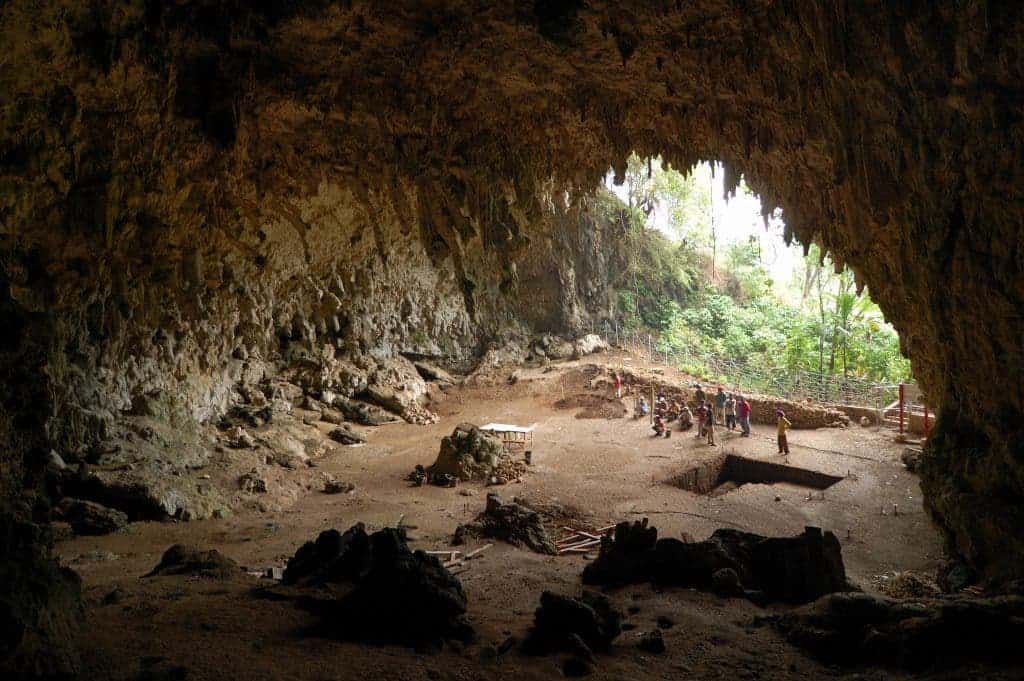
What caves are
Before we start looking into the types of caves with more detail, let’s analyze just what caves are. Not any hole in an underground space is a cave. In order for it to be called a cave, the structure must be natural and large enough for a human to enter. This part of the definition isn’t so strict, though.
Caves can be formed by various geological processes and therefore, can vary greatly in size and structure.
Solutional caves
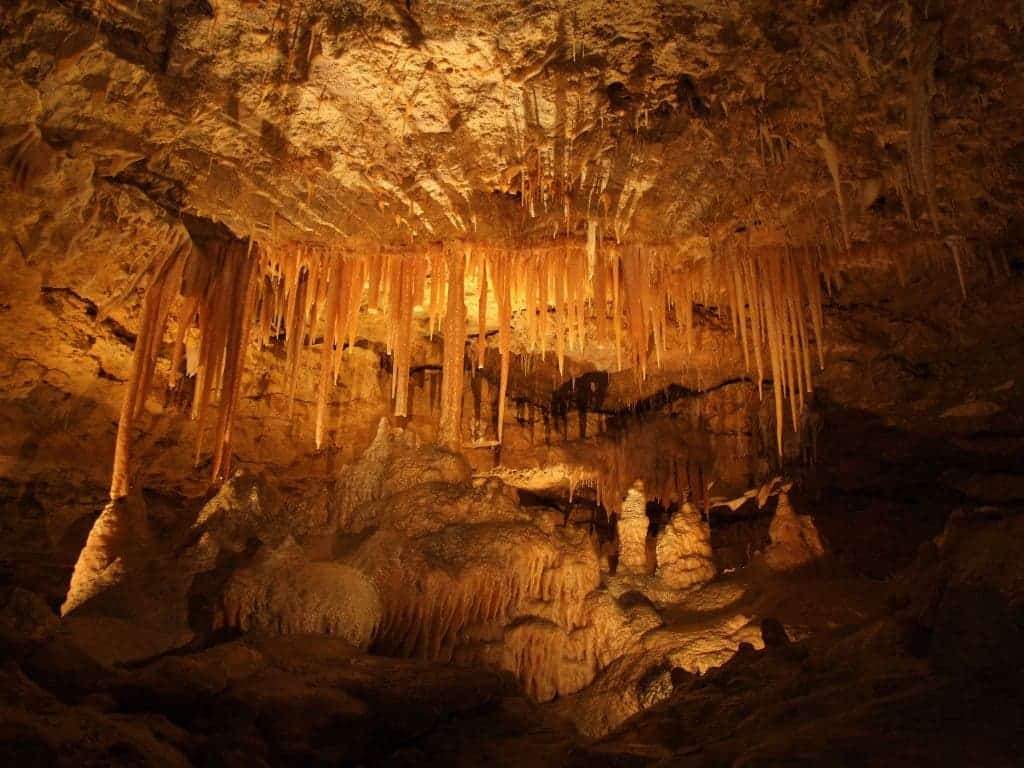
Limestone cave. Photo by Andrew McMillan.
These are by far the most common caves – for most people, they’re probably synonymous with caves.
Solutional caves form in carbonatic rocks, most commonly limestone, but also chalk, dolomite, marble, salt, and gypsum. Regardless of the type of rock, the process is similar. As water falls on the ground, it accumulates carbon dioxide from the atmosphere, becoming a very weak acid. But even this “weak acid” can create great things over time: as the water percolates through the rock, it dissolves more and more, creating bigger and bigger voids.
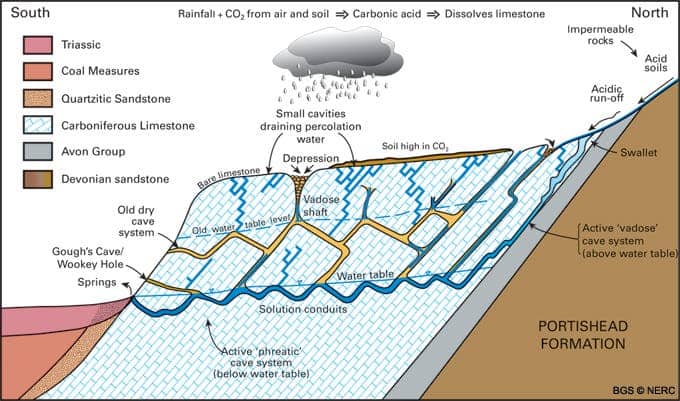
How caves form, via British Geological Survey.
It does take a lot of time, however – we’re talking geological time. This is why solutional caves often have formations like stalactites and stalagmites. Limestone caves especially have many formations, and they’re also the biggest and most impressive caves.
Lava caves
Primary or lava caves form at the same time as the rock around them, as a result of volcanic activity.

Thurston Lava Tube in Hawaii Volcanoes National Park, Hawaii. Photo by Frank Schulenburg
Lava caves are almost always lava tubes, formed by flowing lava. As the lava flows, it cools down and creates a solid crust. Liquid lava continues to flow beneath that crust, and most of it flows out, leaving behind a hollow tube. Lava tubes aren’t formed only on Earth, but also on the moon and on Venus.
In some rarer circumstances, these caves can form outside of lava tubes. Rift caves, lava mold caves, open vertical volcanic conduits, and inflationary caves can all form due to volcanic activity.
Sea caves
Sea caves are found on shores all around the world, also usually in carbonatic rocks.
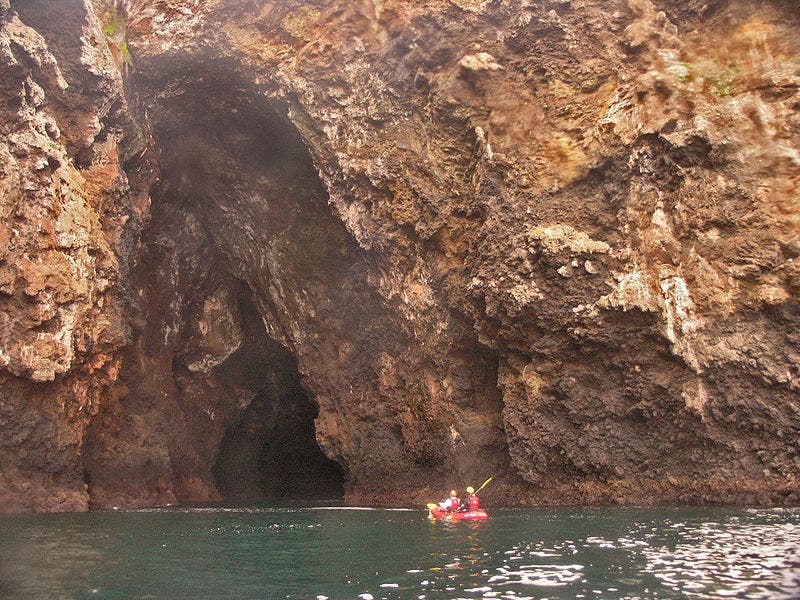
Painted Cave, a large sea cave, Santa Cruz Island, California. Photo by Dave Bunnell.
The constant action of waves attacks the weaker part of the rocks and in time, starts to erode them. Sand and tiny bits of gravel can also amplify the corrosion. A special case of sea caves is called littoral caves, where the waves act on very weak areas, such as faults or bedding plane contacts. The waves “speculate” the rock’s weakness and can create a cave much faster.
Glacier caves
Until now, we’ve talked about rocky caves – but caves can also form in glaciers.
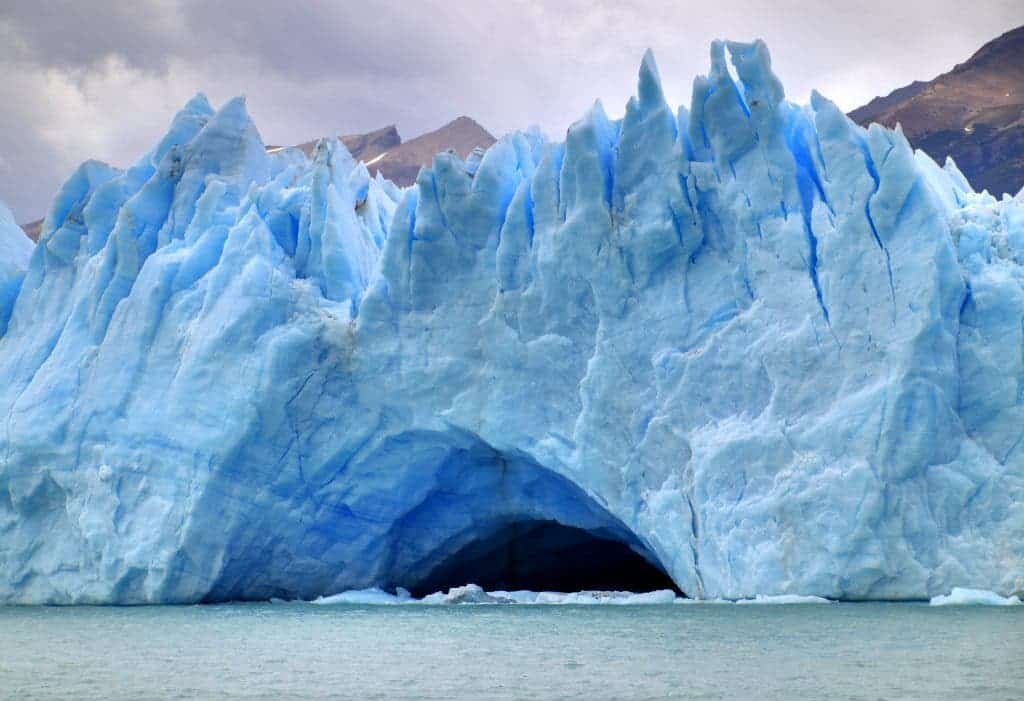
A partly submerged glacier cave on Perito Moreno Glacier. The ice facade is approximately 60 m high
They are similar to solutional caves, but it can form much faster. Melting ice and flowing water within the glacier can create surprisingly large ice caverns, which are regarded as caves. Though they are sometimes referred to as “ice caves,” that term is normally reserved for rocky caves with year-round ice formations inside.
Other types of caves
As we mentioned above, there are other types of caves too, but they’re much rarer.
- Fracture caves form when a soluble layer, such as gypsum, dissolves. After the layer disappears, the rocks around it can collapse, creating a fracture cave.
- Talus caves are formed by the openings among large boulders that have fallen down into a random heap. They should be avoided as they’re usually unstable and dangerous.
- Eolian caves are formed, like their name says, by the wind. They form only in deserts, driven by the sandblasting effect of silt or fine sand being blown against a rock face. They can be surprisingly large and impressive.
- Anchialine caves are usually coastal and contain a mixture of freshwater and saline water (usually sea water). They occur in many parts of the world and often have highly specialized, endemic fauna.
- - - - - - - - - START OF LOGGING REQUIREMENTS - - - - - - - - -
In order to log a "Found It!" for this Earth Cache, please go to the Posted Coordinates and complete the following tasks:
1. Based on what you have learned about the different kinds of caves, and based on your observations here at Thousand-Person Cave, what kind of cave would you classify Thousand Person Cave as? How did you come to your conclusions?
2. Send me one photo (or more if you would like) via the Geocaching Messaging Center of at least two features Thousand-Person Cave has that classify it as the cave you said in it was in Task 1. Please make sure to label the features in your photo and tell me how you came to your conclusions.
3. Optional — Post a photo of yourself or a Geocaching item identifying yourself here at Thousand Person Cave.
- - - - - - - - - END OF LOGGING REQUIREMENTS - - - - - - - - - -
|
Info About Trail from Xingfeng Bridge (行豐吊橋) to Thousand-Person Cave (千人洞)
IMPORTANT INFORMATION: This hike is very demanding and requires a lot of physical strength. The one-way distance from the Xingfeng Bridge (行豐吊橋) to Thousand Person Cave (千人洞) is about 6 kilometers and takes about 3 to 4 hours to get to. (This is walking at a leisurely pace with periodic stops for breaks accounted for.) There are many steep parts that go up rock faces and these challenges will go from the beginning of the trail after crossing Xingfeng Bridge (行豐吊橋) and continue all the way to Wochuan Cave (我船洞), which is about 5 kilometers from the beginning of the hike. After Wochuan Cave (臥船洞), the trail will become much tamer and flatter. However, before this point, the trail is very steep and challenging. Even though the trail is well marked with trail banners tied to trees, be careful when using trees or other plants to pull yourself up the trail as there are a lot of poisonous plants or plants with thorns. The trail does, though, have a lot of ropes tied around nearby trees to assist in pulling yourself up so make good use of those ropes; however, there are still a few precarious spots that lack safety ropes and the dirt/rocks below can be quite loose at times and may give way, causing you to slip and fall so please be extra careful. Also, there are a few sections along the trail that are near cliffs and the trail at these sections is extremely narrow--about a meter or so wide. As this is a trail deep in the mountains of Taiwan, you must stock up on food, water and other necessities before beginning the hike. The closest convenience store, as well as other small food places and lodging, is in the village of Shigupan (石鼓盤), which is about a ten-minute drive from the Parking Lot referenced in Waypoint 4. Supplies may be limited in this area so please plan accordingly. Please only attempt this hike if you feel physically fit to do so and have the necessary equipment (i.e. proper hiking shoes, gloves, additional ropes, etc.).
Please Note: I have only done the round-trip hike (approximately 12 kilometers total) starting at Xingfeng Bridge (行豐吊橋) to Thousand-Person Cave (千人洞) at a leisurely pace in about 8 hours total (including stops for breaks and lunch). So plan for a full day if you wish to find the caches along this trail to Thousand-Person Cave (千人洞). The trail continues onwards past Thousand-Person Cave (千人洞) to Shuiyang Forest (水漾森林) and other locations past that but I have only hiked to Shuiyang Forest (水漾森林), and the trail is well marked but many "obstacles" like tree roots and the like make the walk quite challenging.
Remember: Geocaching is all about going to a new place and being introduced to something new but with some caches come inherent risks. This one will be much more enjoyable and the risks minimized if you heed the suggestions and keep in mind the warnings outlined above. I did not place this geocache to put people's lives in danger or to scare people. This geocache was placed to give a challenging hike to the adventurous Geocachers that will reward them with one of the most stunningly beautiful places I have ever visited in Taiwan. I hope you will love this secret place as much as I do. Hike slow and take in all the beautiful sights Mother Nature has to offer.
Miscellaneous Info
Also, you will need to get a hiking permit to enter this region. You can apply for one by clicking on the website here. Unfortunately the website is only in Chinese at the moment so please ask a native speaker of Chinese to assist if you need help applying for a permit.
|